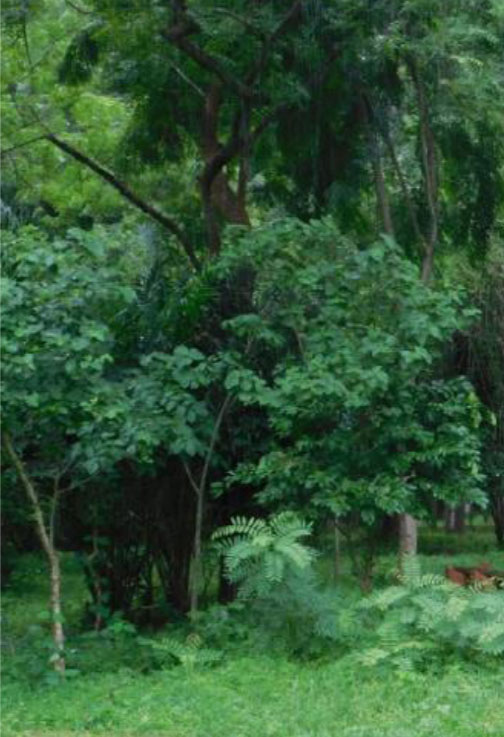
Park. COURTESY PHOTO.
Musando said the cement firm also ensures that in the process of landscaping, the environment is suitable for all kinds of creatures.
“In the water ecosystem, for instance, we create an aquatic habitat that has all sorts of connections…there are creatures that live on land but survives on food in the water and there are also those creatures that live in the water but survives on conditions on the land,” he states.
“For example, the monitor lizard would be in water to eat fish and come back to bask in the sun and when it is too hot, it dives into the water.”
“The fish here take care of reducing the population of mosquito by consuming the larvae. Without the fish, mosquitos will be all over this place. .. Seaweed, water lilies play a big role in bio filtration.”
He said restoring the quarries has enabled the cement firm to help in air purification, hydrology, and sale of trees, firewood, eco-tourism, fish, recreation and education.
The two quarries, Musando, said are open to the public as nature parks, generating revenue from various activities to support conservation initiatives.
With a visitation of over 200, 000 visitors a year of which over 90,000 are students, the parks charge kindergarten children Kshs 100 (Ushs3,600), upper primary Kshs 200 (Ushs 7,200) and secondary and university students Ksh250 (Ushs 9,000) each, said Nyinge Karima Nyinge, Ecotourism Manager, Bamburi Haller Park.
He said the East African children aged below 12 are charged Kshs 300 (Ushs10, 800), adults Kshs 500 (Ushs18, 000) while those outside the East African region are charged Kshs600 (Ushs21, 600).
This additional revenue has also helped boost the Nairobi Stock Exchange listed firm’s bottom-line, which fell sharply in 2018.
Bamburi Cement recorded 83% drop in pre-tax profit to Kshs 680million last year, down from Kshs4.12bn in the previous year, citing shrinking market in Kenya and higher debt provisions at its Ugandan subsidiary.
The firms also blamed profit drop on higher operating costs, including for energy, and higher provisioning for receivables in Uganda.
Industry analyst told Reuters news agency that cement volumes in Kenya grew by 9% despite a 5% drop in the overall cement market, suggesting Bamburi Cement had to cut prices to boost market share.
“Increased competitive pressure fuelled by a growing gap between installed cement grinding capacity and the shrinking market has played a key role in the market dynamics,” Bamburi said in a statement.
Bamburi Cement’s initiative to successfully rehabilitate and conserve biodiversity in the former barren quarries has earned it global recognition around the world.
Replicating the same in Kasese, Tororo
Hima, the place where Bamaburi Cement’s subsidiary, Hima Cement factory, is located seem to be in a state where Bamburi was many years ago, according to the residents.
The residents cite dust all over the vicinity, and thus believe that doing something similar to that of Mombasa could do them well.
Musando, however, says similar work is going on at Hima though not as extensive as it is in Kenya. He cites differences in laws governing the cement mining processes.
However, he said Hima is even doing much better in terms of integrating the communities in their operations to conserve the environment.
“Hima is doing alternative fuels as the plant is running largely on alternative fuel which is environmental friendly than us here,” he said.
No freebies to the surrounding communities
Dissimilar in Uganda where the government gives a share of its tourism revenues to the neighbouring communities, Bamburi Cement firm does not.
Instead, the firm offers business opportunities to the local communities in terms of providing various supplies to the cement firm.
“We buy trees for planting on our land from the neighbouring communities as well as employ them during planting season so that they know from the start that we are with them,” Musando said. “Our aim is not to avoid making them used to handouts but show them how to work for themselves.”
The cement firm also extends free maternal health care to the neighbouring communities, upgrades infrastructural facilities and helped set up a cancer center run by the Coast General Hospital.
 The Independent Uganda: You get the Truth we Pay the Price
The Independent Uganda: You get the Truth we Pay the Price


